
Lulu, Jess and Liv founded SSAW Collective — that is, Spring, Summer, Autumn, Winter — back in 2019. As a chef and two florists, and ultimately as friends, they came together and realised that their respective industries, and the farming methods that have been traditionally used, were in need of radical change. We sat down with the three of them to chat about what we can do to play a positive role in that, and how seasonality affects so much more than we think.
Tell us a little bit about the story behind SSAW.
Lulu had been a chef in London restaurant kitchens for years whilst both Liv and Jess had met working as freelance florists on large-scale events and weddings together. Late 2019 all three of us were becoming increasingly disheartened by the ways in which our respective industries were directly impacting and damaging our environment.
“For our planet, and for humans, animals and soil to live and thrive, we need to work with nature as opposed to against it, and that is exactly what we at SSAW are focusing upon, whether it’s through events or campaigns.”
We were also beginning to take growing more seriously, having all spent some time working on and researching regenerative farms and recently taken on some land of our own to grow on.
When the pandemic hit, work in the hospitality industry ground to a halt but we had a lot of flowers in our fields that we needed to shift! That’s where it all began — we quickly realised that by joining forces not only as growers but as a chef and florists, our work is intrinsically linked and directly relatable once you consider that farming is the glue that holds the food and floral industries together. Alongside growing, our focus is on putting together events in collaboration with other like-minded businesses. We have set out on a mission to advocate for positive change in farming, food & flowers — acting as a platform for existing change-makers.
We love encouraging conversations between people, and we hope they will inspire and trigger the changes we so desperately need for a healthier future planet and people on it!
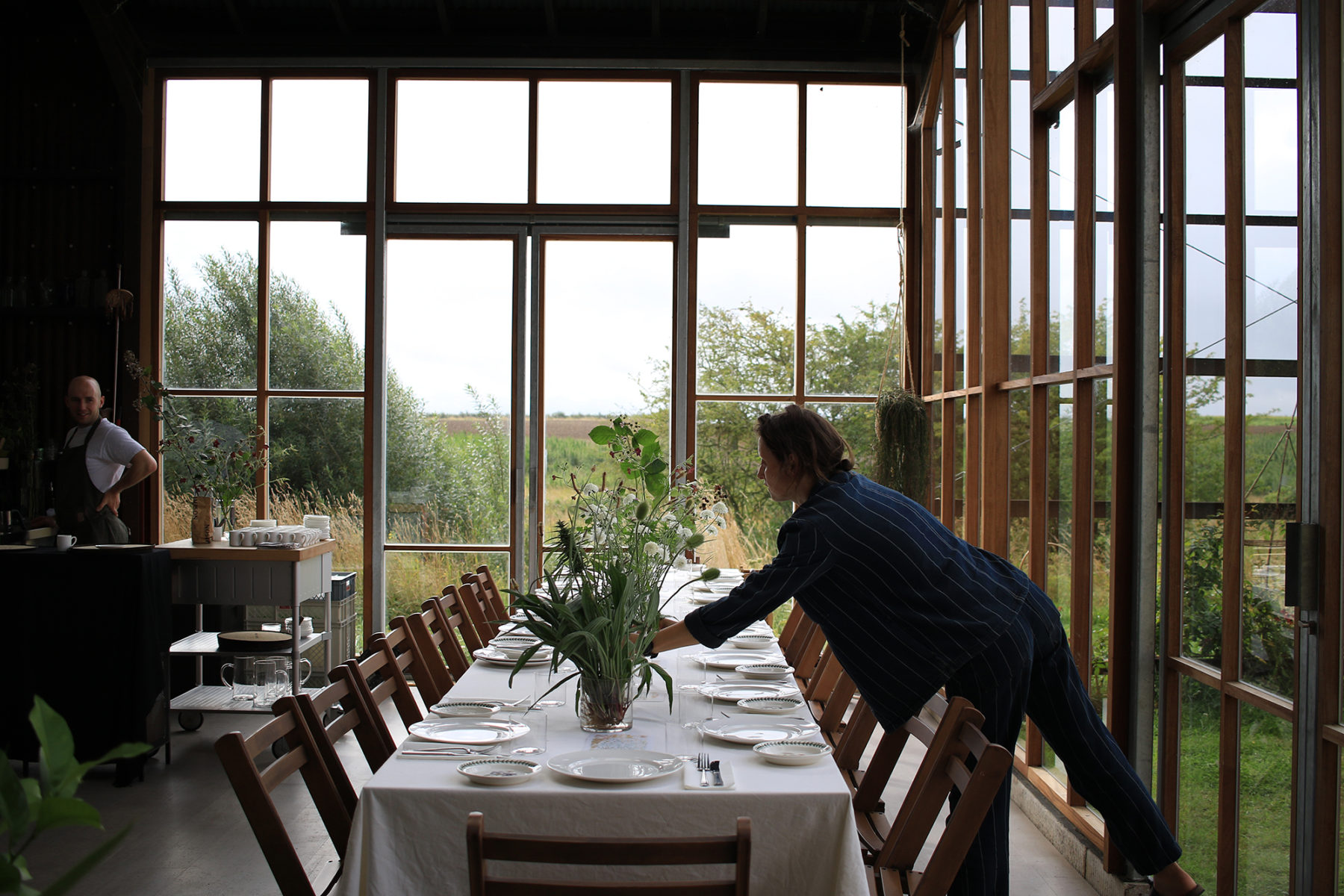
We don’t talk about seasonality often enough, and many people many may not realise that flowers run in seasons in the same way as food. How can we make more informed choices when buying flowers?
Avoid supermarket flowers that are grown abroad and or don’t specify where they are grown. Take note of the green spaces around you, of the plants in bloom, and know that’s a safe choice. Get familiar with the flowers in your surroundings. A lot of this is common sense — if it looks tropical, it will have been grown and flown from far away! The best thing you can do is talk to your local florists or seek out a local grower if you live rurally — chat to them about where their flowers are coming from.
You work exclusively with farmers, growers and makers that work regeneratively with the land. What does that mean and why does it matter for both food and flowers?
Working with regenerative produce in short means that the production of the plant in question is giving back to nature: it’s regenerating the ecosystem that it’s a part of, whether that’s through helping soil structure, insect population, fixing nitrogen through its roots etc. When we are taking something away we need to make sure it’s given back so as not to create imbalance.
There are numerous ways in which this can happen, such as (but not limited to) attracting pollinators, increasing insect populations through habitat creation, providing the soil with a natural source of nitrogen, or sequestering carbon through photosynthesis. Globally, we have practised incredibly extractive farming techniques that have prioritised yield, often in monocultured environments that disregard the importance of regeneration. Yield is boosted by chemical fertilisers, and it becomes a vicious cycle whereby the soil is no more than a medium for the roots to sit inside. No diversity, no nutrients, no life. In order for our planet to stay healthy we need to prioritise nurturing the system. For so many years we’ve gotten away with this extractive way of living, but with an expected population of 10.9 billion by the turn of the century we simply can’t continue in this way, whether we’re talking extracting natural resources for fuel, foo, textiles, you name it.
For our planet, and for humans, animals and soil to live and thrive, we need to work with nature as opposed to against it, and that is exactly what we at SSAW are focusing upon, whether it’s through events or campaigns.
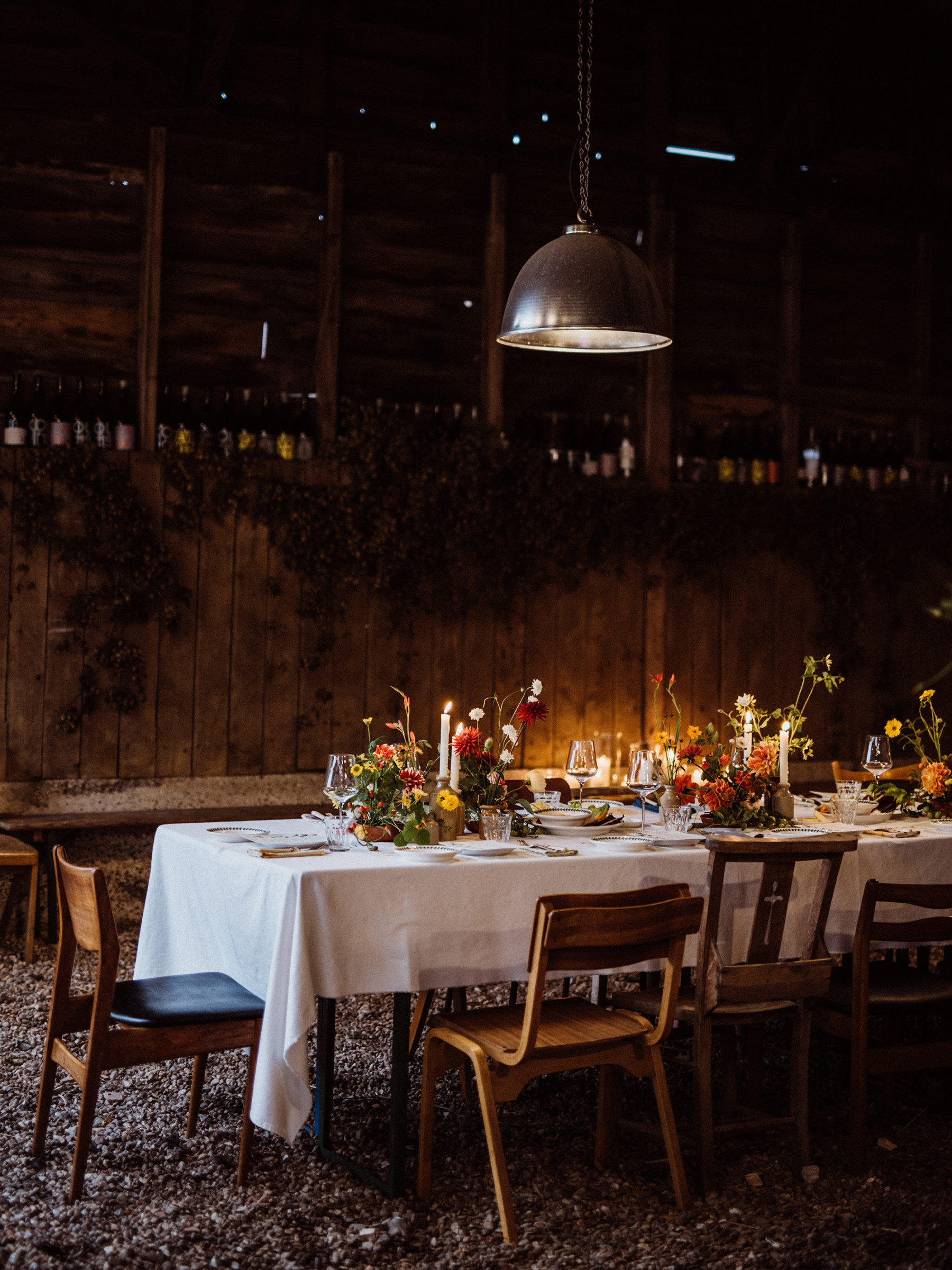
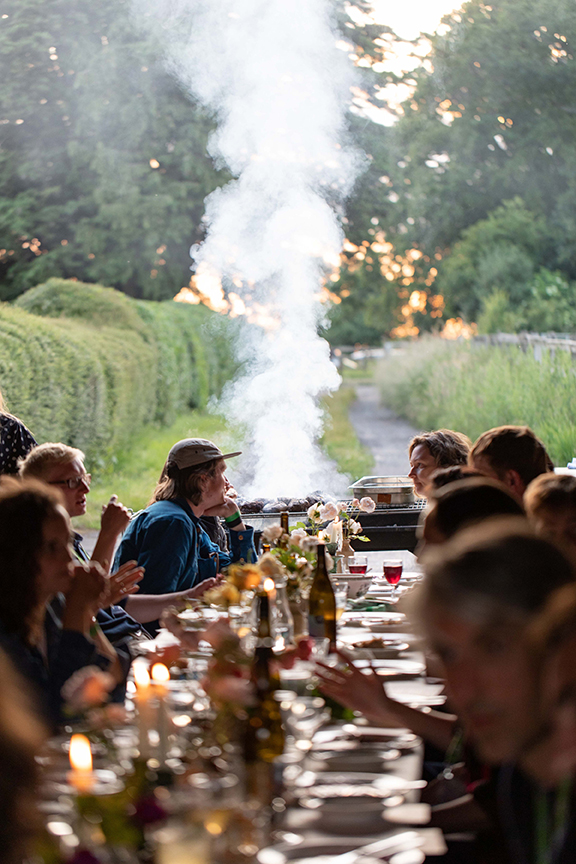
How do your various experiences and your expertise — Lulu, yours in food and Jess and Olivia, in floristry and growing — feed into what you do and how you push for change?
We love spending time getting to know suppliers and learning about their practises, whether they’re fellow chefs and florists, farmers, growers and artists. This feeds into our practises in several different ways. We have a journal on our website where we talk about other inspiring stories. We love this feature as it extends our community and acts as a platform for change-makers in the regenerative and ecologically minded space. A regenerative mindset is not limited to farming alone; there are so many industries that are interconnected, which is why we are so excited about bringing people together from various backgrounds and interests to talk about how their work can make a difference.
As a three we share the same artistic vision and genuine appreciation for the beauty in simplicity. The impact a single flower can make on a countertop bud vase, the satisfaction of podding fresh broad beans to eat immediately with a hard, salty cheese, or last minute addition of nasturtium flowers to a salad. There is a lot of room for clutter and excess in event production, but we are united by resourcefulness. The restrictions on which ingredients we use means we have to be braver when making creative decisions. When it comes to planning an experience where the provenance of every element is considered, not only produce and flowers but crockery, glassware and cutlery, we never cut corners or make exceptions to our ethical standards.

Let’s talk about Roses. Why shouldn’t we be buying them in February, and what are the alternatives?
February is the time to prune a rose in the UK, and they bloom from late May/early June through the summer, sometimes returning for a second flush in early Autumn. They are the last thing you’d expect to see in flower in February, so to us it feels completely unnatural to be buying them at this time of year. The roses you see for sale in shops and supermarkets for Valentine’s day will have been grown either in Dutch hot-houses or flower farms farther afield in Kenya or Ethiopia for example, where pesticides remain unregulated and working conditions as a result of this are also unsafe. There’s a myriad of other complexities in the supply chain that make buying imported flowers very difficult to do with 100% confidence in traceability. Just like when buying fresh produce, the closer you can get to the grower the more likely you can be sure of the way in which it was grown, who it was grown by and with what principles in mind.
There are so many gorgeous alternatives to a rose for your Valentine — we are offering little pots of snowdrops or bunches of cyclamen — both native British blooms that coincidentally symbolise love and longevity in the language of flowers. We’re also selling “Why Buy Roses in February?” posters by the artist and printmaker Rosanna Morris. Seeds make excellent gifts too — we think there’s real romance in the promise of flowers in the summer months!
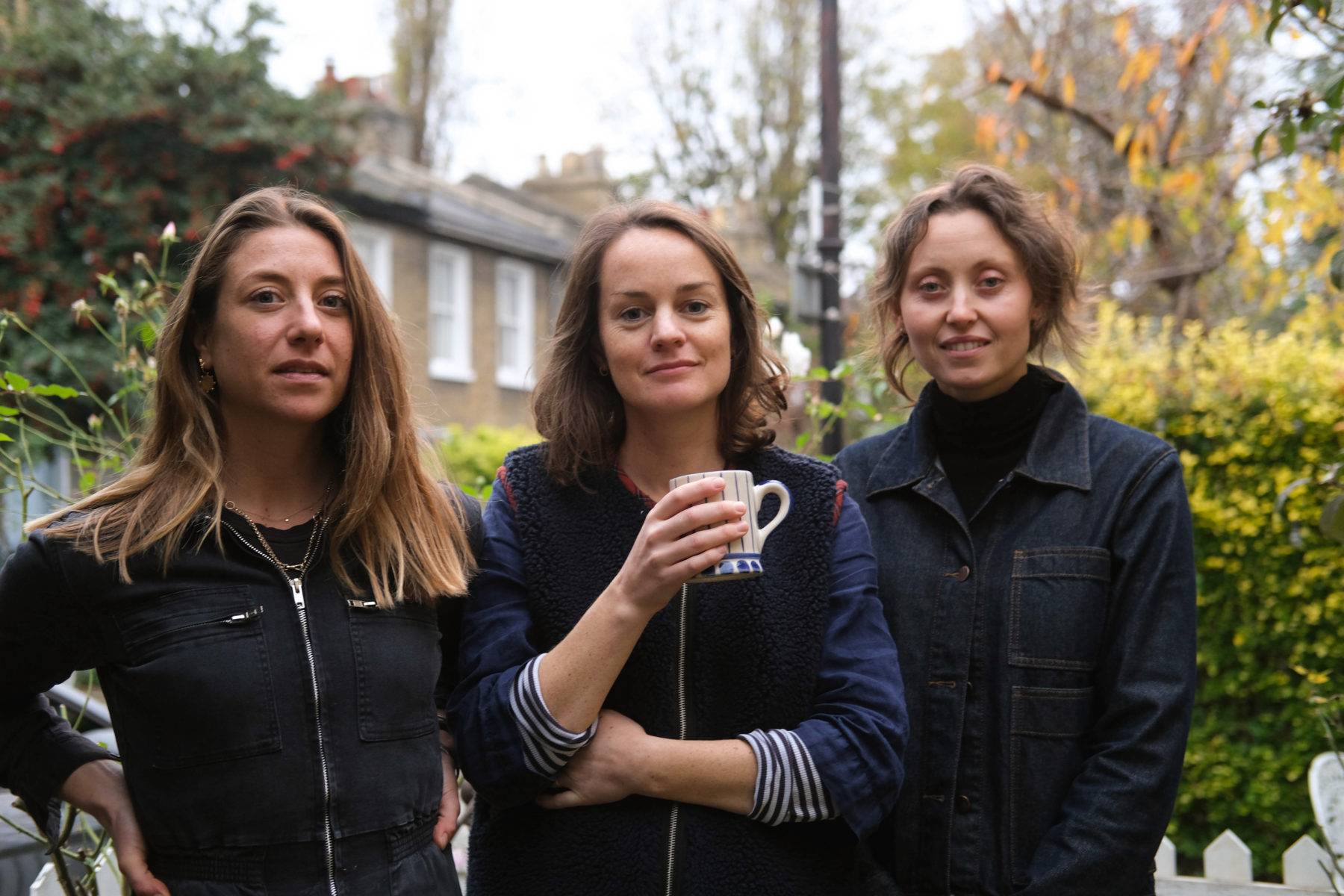
Tell us a bit about Rosanna Morris and why you chose to work with her for your “Why Buy Roses in February?” campaign.
We had been great fans of Rosanna’s work for years so we were really touched that she was on board with the topic when we approached her. She has a knack for finding and creating beauty in difficult or ugly topics and it is that sense of hopefulness that we wanted to channel in our approach too. Facing up to uncomfortable truths is hard but we want to be gentle with each other, creating a safe space to have conversations without the fear of shame or retribution. We wanted the posters to be something people would feel empowered by — we hoped that hanging them on our walls would remind us to continue thinking about the importance of provenance and considering seasonality all year round.
From food to flowers — what will be on your table in February this year?
We’re hoping the first anemone from inside the polytunnel in Essex will have flowered in time for Valentines’ Day — it’ll be a single tiny bud vase on Jess’s table if that’s the case! Or else Liv might bring back the tiny blue muscari bells that are popping up in her fields in Herts, so small but so sweet and scented too.
It’s a wonder to have Seville oranges through the door, and forced Yorkshire rhubarb has firmly arrived. Whilst we have to wait patiently for the spring summer vegetables to arrive, Lulu’s enjoyed trying out different recipes with Hodmedods British grains — things like Naked Oats have been a revelation, they are delicious and a highly nutritious replacement to rice.
SSAW Collective’s Pantry
Five items that you always have in your pantry, or couldn’t live without.
- Fresh bay leaves
- Two Field Zakros olive oil
- Hodmedod pulses and grains
- Ortiz salted anchovies
- Dried camomile for tea
Read more: SSAW Collective
SSAW Collective’s online journal is full of stories from other inspiring change-makers and like minded businesses. They’re gradually building a community to help advocate change and emphasise the importance of seasonality, provenance and regenerative farming practices. Explore their website to find out more.

You’ll probably know Robin Gill as the man behind The Dairy — the neighbourhood restaurant that brought seasonal small plates to Clapham back in 2013. Sorella, Counter Culture and Darby’s might sound familiar too. Perhaps you don’t yet know though that in 2019, Robin embarked on something a little bigger. Working his way north of the river, he now heads up the food at Birch, a retreat just outside central London.
It’s not immediately obvious from the stately exterior that much of Birch’s fifty-five acres of land are dedicated to food and farming. With a kitchen garden, a vegetable patch, beehives, as well as pigs, chickens and sheep, the food at Birch is very much led by nature and what grows on the land. We sat down with Robin to chat about his latest farm-to-table project and how this time, he is able to prioritise flavour, process, simplicity and nature in a way that he hasn’t before.
“I really admire cooks that take a vegetable like fennel and use it all, and just let it sit naturally on a plate. I think it’s easier to cook like that too. If you’ve got really nice produce that’s super fresh, it’s actually a much nicer and easier way to put food together.”
Robin, what brings you way up north from Clapham up to Cheshunt? What attracted you to Birch?
The space! I’ve always wanted to get involved in a space like this where we could grow on site. I thought I would probably do it in Ireland and didn’t ever get around to it, but I knew exactly what I wanted to do. I got introduced to the guys behind Birch through a mutual friend and we came up here to have a look about a month later, so I was involved from the really early stages.
The initial plan wasn’t necessarily as extensive as what we’ve ended up achieving — which is to grow our own produce, have a bakery, a few restaurants etc — but then we came up and mapped out the area, and it all very quickly became part of the planning. I then started to bring on people from my community and get them involved the project, like Ben Rand, who’s worked with me since we opened The Dairy.


Your cooking has always been defined by a seasonal, local food philosophy. Where did that love for cooking with nature and being in tune with the land come from?
I was exposed to it when I was very young. I used to go spend summers down with my auntie in Cork where she had an organic vegetable farm. My brother used to work there — he made bread all the time and he cured his own meats, so I would’ve seen it, but probably not taken that much notice of it as a kid. It was only when I started cooking that I was exposed to it a little bit more.
Then there was one place I worked at later on in particular in Naples in the south of Italy, Don Alfonso. He had a farm on the Amalfi Coast and it was so interesting to see how he operated it. The restaurant had two-Michelin stars and Don Alfonso used to spend all of this time in the farm and bring all the produce to the kitchen. It was almost like he was facilitating the cooks with a great kitchen and the best produce, and he was like ‘right, now make something nice with it!’.
The approach to the cooking was really simple. I was used to working in quite prestigious French restaurants where there was a lot more technique involved, but I liked the simplicity. As you get older you also get a little bit more confident doing things like that. When I first started cooking it was more like ‘okay, I can do 18 things to a cauliflower’, but now I know it doesn’t mean you should.
That kind of ‘farm-to-table’ attitude has been the natural way of life in most of France and Italy for a long time, but it’s only recently slowly been gaining more traction here in the UK thanks to chefs like yourself. Why do you think it’s happening now?
I think it’s a combination of things. It’s about the time the UK was influenced by what’s been going on in France and in Italy for many, many years. It’s really nice to see. What’s interesting is that you see more and more restaurants in the city being more obsessive about it. That was my goal when I was opening The Dairy, I wanted to try to emulate that farm-to-table philosophy as close as I could.
There was a time when people were looking at things like molecular gastronomy and honestly, I never liked it. It never sat right with me. Why would I want to make a powder out of this or that? It didn’t feel natural, so I’ve been really glad to see that culture changing and becoming very much more about the produce and zero wastage as well.
I admire cooks that take a vegetable like fennel and use it all, and just let it sit naturally on a plate as it is. I think it’s also easier to cook like that too. If you’ve got really nice produce that’s super fresh, it’s actually a much nicer and easier way to put food together.


You’ve always been focused on individual ingredients, even back when you had The Dairy. You had bee hives on the roof of the restaurant and honey was always a big part of the menu. Why did you decide to bring that over to Birch?
It’s that full circle thing. The honey and the bees became almost a signature of The Dairy, which essentially was a really tiny version of what we’re doing here.
You get that sense when you’re in the dining room from the pass, the open fire, the music — it’s about trying to create a great atmosphere but backed up by something that’s responsible and exciting, and completely produce and craft-led. It’s all the small things we learned to do at The Dairy and now I’m able to do it on a bigger scale.
It’s almost ironic that the closure of The Dairy happened as we were opening at Birch. They’re so similar.
You definitely have a lot more space to work with here. What does access to this land and this farm afford you both in terms of growing and cooking?
We’re only just starting the growing process and it needs a lot of planning, but it does allow us to be more creative. We’re going to have trial and error all along the way, but it’ll be exciting to see how it changes and how we can make sure that we’re getting things all year round. We’re working with Birch’s farmer Tom Morphew on that.
When you’ve got access to produce in abundance, there’s preservation as well. You ferment it and the flavours continue on and it gets really exciting. At the moment we’ve got some artichokes from last year and we’ve made elderberry vinegar too. You can jazz things up when you’ve got ferments and pickles from seasons before. If you can have something from summer to add to an autumn menu or vice versa, I think that’s really interesting.
Within the industry it’s easy to be in tune with those ways of cooking, but as home cooks it seems we have lost touch with seasonality and that sense of knowing where our food comes from. How can we go back to thinking about local, seasonal, carefully grown produce, not just in restaurants but in our homes?
It’s by searching out those farmers markets and by supporting them. There are more and more popping up all of the time. And if the consumers start to demand that, we might even see more locally farmed produce in the big supermarkets. I’ve even seen Lidl have started bringing in some decent produce from local farmers rather than the mass-produced stuff.
It’s strange — if you’re in a little village in France or Spain, there’s always a fruit and veg shop. What happened to those shops here? A lot of them have gone, but I think they’re coming back. During lockdown I saw two or three even pop up in Clapham which is great. Natoora is also a great example and you’re starting to now see them in supermarkets. They’re representing smaller farms, and it’s companies like that, they’re the ones that are big enough to have an impact and give the consumer access to that produce. It’s expensive but it should be expensive.


With the Zebra Riding Club you also place a lot of emphasis on wood-fired cooking, why is that?
We designed the kitchen in a way that meant we only have two induction hobs and everything else is led by fire. It’s a bit of a romantic way of cooking but it’s also a way of enhancing a lot of products. Not burning stuff, but enhancing them with a little element of smoke. It’s a really nice, natural way to cook and again, it just feels right. You’re not in this big glitzy lab-like kitchen with electricity everywhere. We feel like we’re craftspeople.
It’s good for the cooks too. There’s something really rewarding about building a fire and controlling it. We temper our ducks slowly over the wood and then blast them with a naked flame. I think the chefs feel like they’re actually cooking something. Thinking about the history of the estate, this is how people would’ve cooked 200 years ago, so we’re only trying to go back to how it was always done. It’s funny, we were credited with creating this new way of cooking or ‘modern gastronomy’, but there’s nothing new about what we’re doing whatsoever.
I’m not a preacher of sustainability but I am doing it because I enjoy it and it feels right for me. It then attracts the right people to come and work with us and eat with us too. It’s not to tick a box or because it’s fashionable. It actually takes a lot more work in some ways.
Are there any goals you have for the restaurant and the land for the future? What do you want to do next?
When we first sat down and planned, it was very much a discussion on how to be low impact on the environment and become completely self-sustaining.
In terms of growing, we’ve mapped out the areas — we want to bring back the walled garden, and we’re getting a polytunnel for the land down by the sheep. We’re saving all the pallets we get from deliveries to also build some raised beds. We might do a sunflower field too. We’re also about to develop our own charcuterie programme from our pigs, maybe we’ll have a dairy in time.
You know, I’d also love to invite other craftspeople onto the land. Let’s say we’ve got someone that wants to get into smoking and we gave them the space, they could smoke for us and sell their produce, and we could work together. It’d be nice to get a big proper orchard going on and our own cider. There’s also a massive cellar which we haven’t utilised yet, originally it would’ve been for storing vegetables and allowing them to mature, but we could have our preserves down there. It’s endless.
What’s in your pantry?
1. Aged parmesan
2. Capers
3. Really good olive oil
4. Tabasco
5. Anchovies
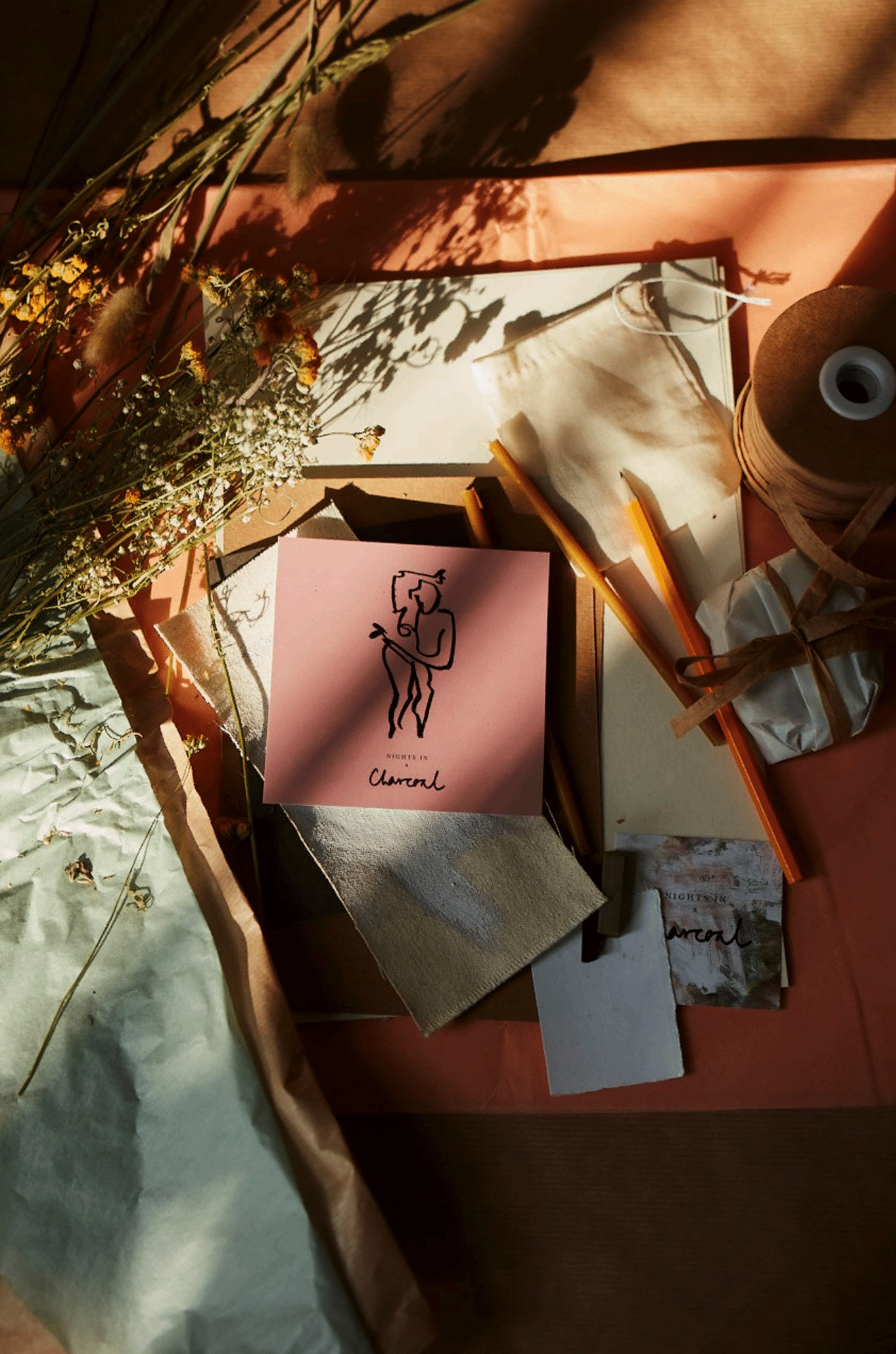
Food stylists Rosie Ramsden & Kitty Coles are the founders of life drawing art club, Charcoal. Having launched at the end of 2018, Charcoal was originally based around evenings of dinner and drawing at Narroway Studio in Hackney, but during the pandemic they turned, as many did, to online classes that gave many a sense of connection and comfort. They’re back hosting live classes, but they’re continuing their classes online too. We had a chat with Rosie & Kitty about their project and how it brings together food, art & design.
Tell us the story behind Charcoal Art Club. How did it all begin? What brought the two of you together?
R: It was a stroke of luck. I was in the mood for small life drawing evenings – book-club style – with friends, and when I mooted it on Instagram it took off. We launched it at Narroway Studio, an hour and a half of drawing with dinner too (cocktails, warm focaccia, a bowl of something warming and usually meringues to finish…).
“I think I speak for us both when I say art has a really strong influence on how we see food. Food styling is a strange job, but one thing I love about it is that it can be so creative. Building a picture with food, just like you would with paints and colours.”
K: Rosie mentioned it to me when I used to assist her on food styling shoots – the idea being to just get a group of friends together to draw, eat, drink and chat. I obviously loved the idea so came along to help cook for the evening, and then it just sort of rolled in to doing a few more, then a few more, and so on. I mainly manned the kitchen while Rosie calmly and beautifully lead the class.
We’ve always thought there’s such a strong relationship between food, art and design. You’re both food stylists so we have a feeling you’ll agree. How would you describe or define that relationship?
K: I went to art school before becoming a food stylist, and Rosie’s an incredible artist as well, so I think I speak for us both when I say art has a really strong influence on how we see food. Food styling is a strange job, but one thing I love about it, is that it can be so creative. Building a picture with food, just like you would with paints and colours.
R: I couldn’t agree more. Part of the reason I fell in love with food styling was so that I could get my hands in, work it like a painting. Working with other people who all have an eye for design is inspiring, and like the life drawing, a whole room of artists (online or in real life) can help you unknot your creativity.


There’s also something so meditative about using our hands both in cooking and in drawing. Do you think that’s played a big part in why we’ve turned to the kitchen and discovered creative hobbies so much in the last couple of years?
R: It’s a good distraction, it makes you feel grounded. Using your hands in a practical way can often be a rare thing when at a desk so when we do it it releases joy and satisfaction.
K: When I first met Rosie, something I really noticed in the way she styles food is the way she uses her hands. You can definitely tell she’s an artist. No faffing about with pipettes or tweezers! We’ve found a lot of people’s interest and enjoyment in Charcoal is being able to use another part of your brain after work. Most people have been at home working all day, and then with a lot of entertainment closed over the last few years, had nothing else to do apart from cook or watch TV. So being able to do something creative, whether it’s cooking or crochet or life drawing, is great for an escape. Also, theres nothing more satisfying than having an end result which you can appreciate/eat/frame.
Rosie, your cookbook The Recipe Wheel is beautifully illustrated with watercolours of fruit, veg and all kinds of ingredients. Do you find that your drawings and art inspire your recipes and styling, or more the other way around?
R: Thank you! One feeds the other, though I definitely have more energy and an urge to work harder after I’ve done a painting. My brain is kicked into gear.
As food stylists, how do you strike the balance between writing recipes that both look beautiful and taste delicious? Walk us through the creative process from developing a recipe to bringing it to life visually through an image. Do you see similarities in the process of drawing or painting?
K: I definitely get very clear ideas about what I want a recipe to look like. But taste is key for me – I wouldn’t add anything just to make it look nice, it’s got to also to make it taste better too. And for me, less is more with drawing and cooking. My strengths lie in the short poses, in the same way my strengths lie in easy, short and simple recipes (my attention span is very short….)
R: I’m actually more last minute with the visuals. I like to play when it comes to the plate, but I’m sure colours and textures come into action well before. Same with art. I’ll mix my colours for an oil painting but it only starts to make sense when its on a canvas (and sometimes it doesn’t too!)
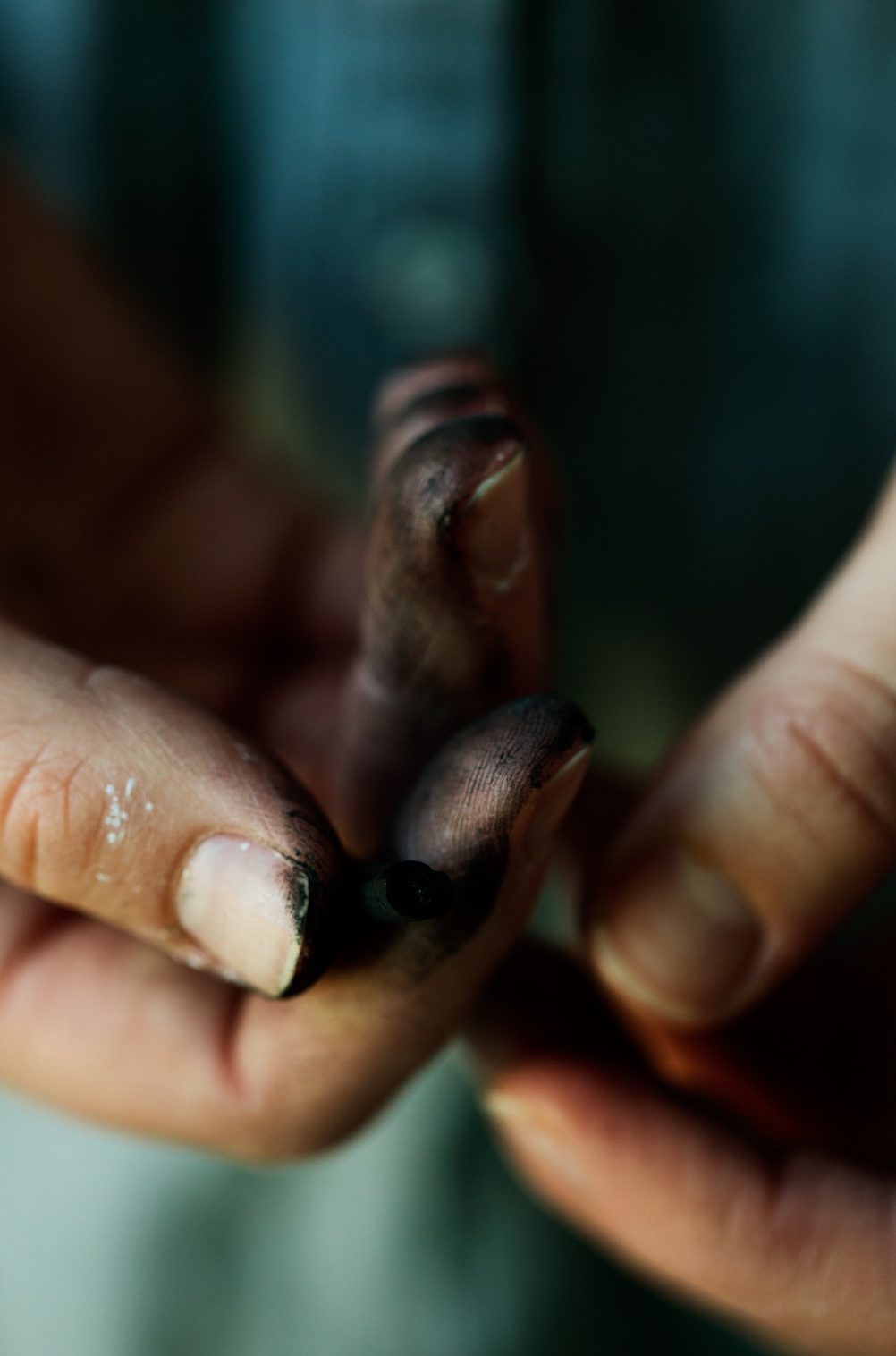
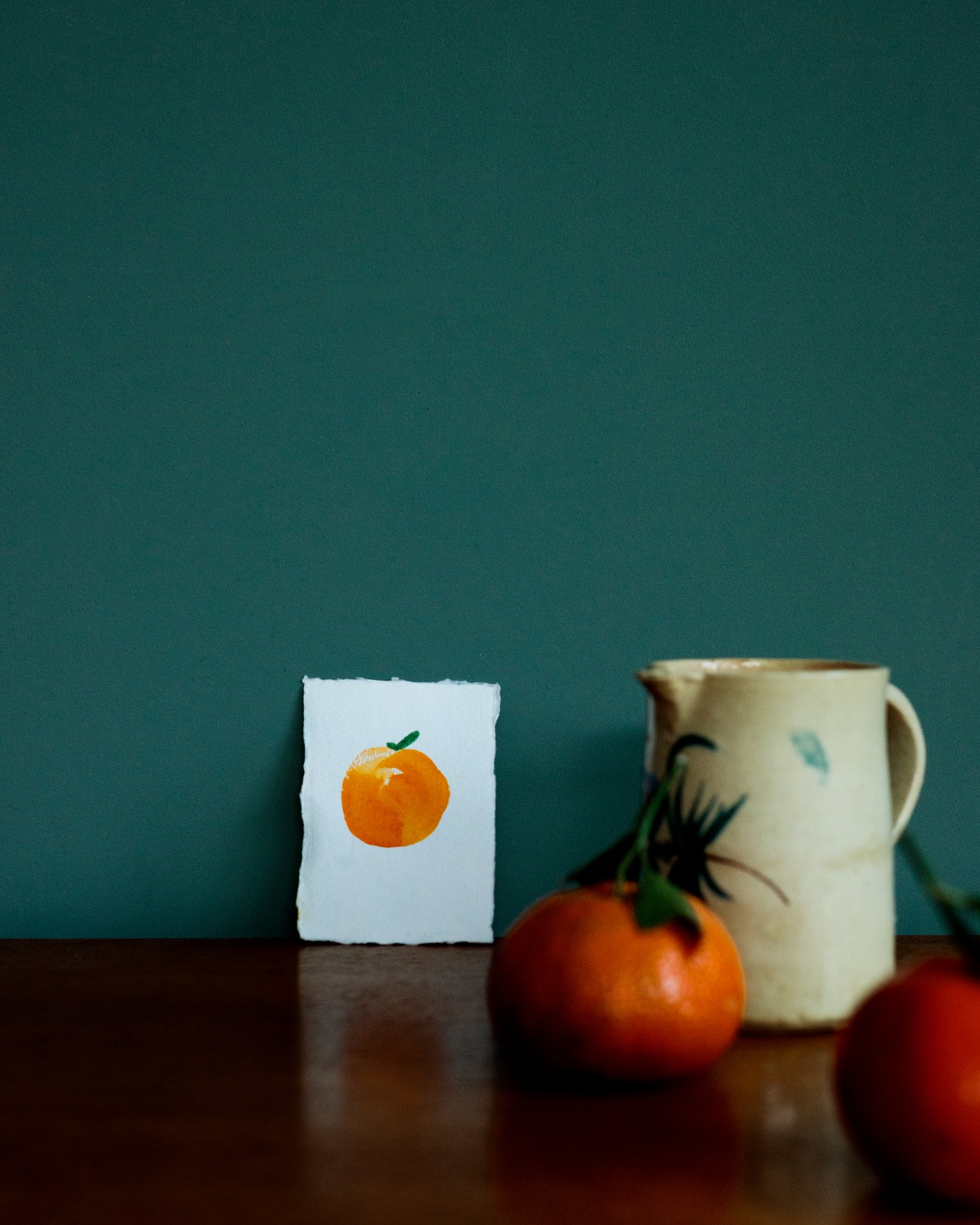
Community is such a big part of both art and food, and of course it’s at the heart of pop-up events like yours. Since you started doing the classes online, how have things changed? Is there still the same connection?
R + K: When we tell people that we now run an online life drawing class, I think people find it hard to imagine. “The model is just on the screen? And I draw what I see on the screen?”. But then they join and see that it’s so cosy and has the best community feeling. There’s something amazing about a group of people all getting together online at the same time – all strangers but having the same interest. We’ve also been able to connect with people all over the UK and even as far as the US which we would have never been able to do before – so we’ll definitely carry on the online classes for as long as we can – to include everyone, and not just Londoners.
We also have a Charcoal membership, so there really is a little community! They come to every class and its so lovely to see familiar faces every week.
If you had to pick one item of food to draw, which would you pick and why? It could be a single ingredient, a dish, anything.
K: Rosie and I both drew each other a little clementine for Christmas a few years ago (we exchanged them the night of our first ever Night In x Charcoal evening). It’s in my kitchen, actually next to a rhubarb, also drawn by Rosie! So maybe I’d say a clementine/orange or even a nice leafy lemon.
The Charcoal Pantry
1. Jarred beans (chickpeas and butter beans always)
2. White Mausu chilli oils (all three of them)
3. Anything pickled
4. Pasta of every shape and size
5. Really good extra virgin olive oil